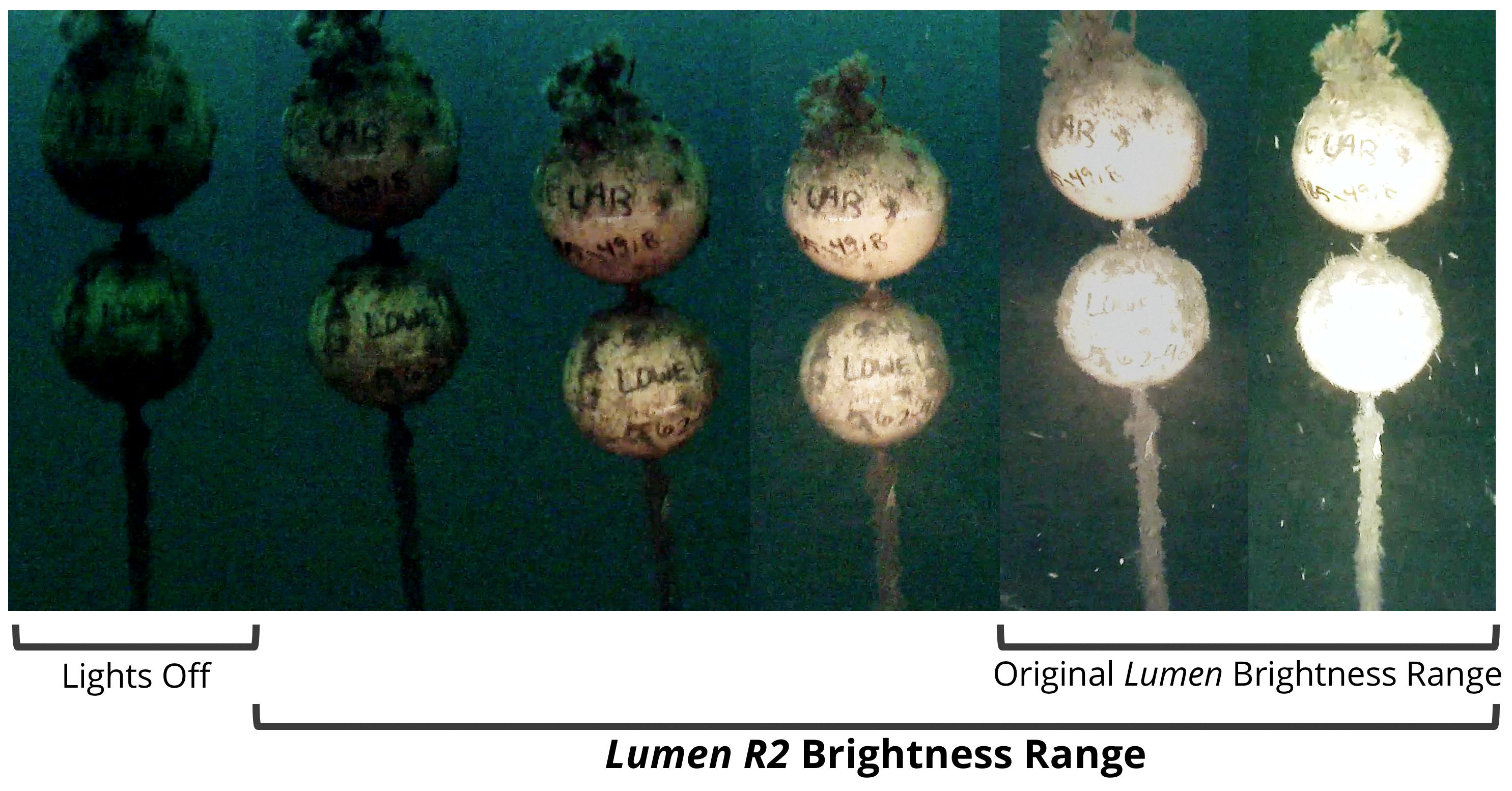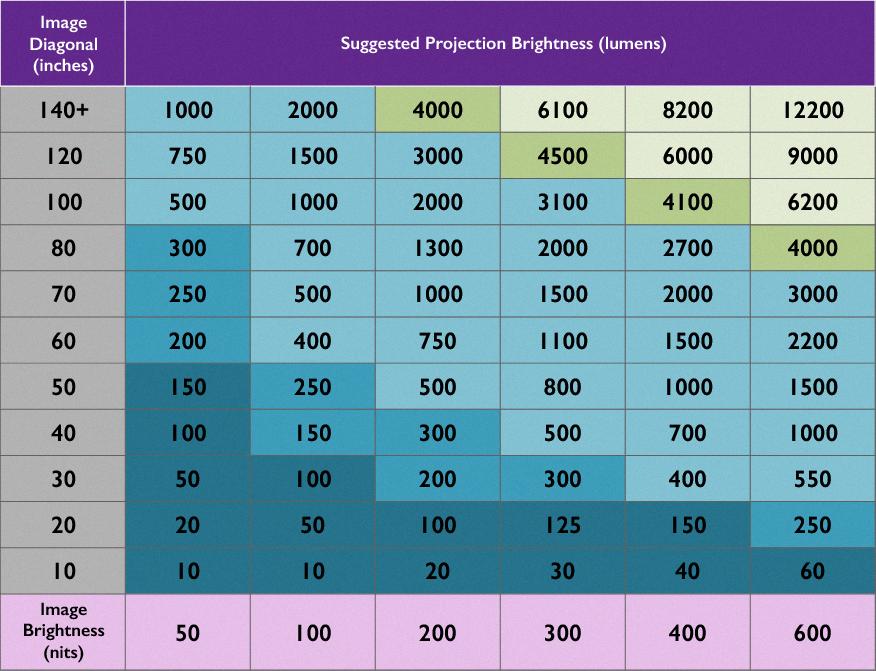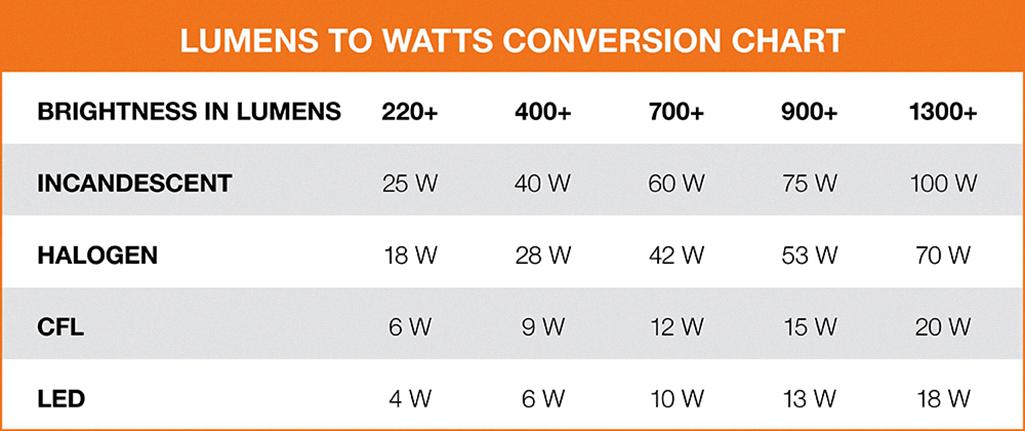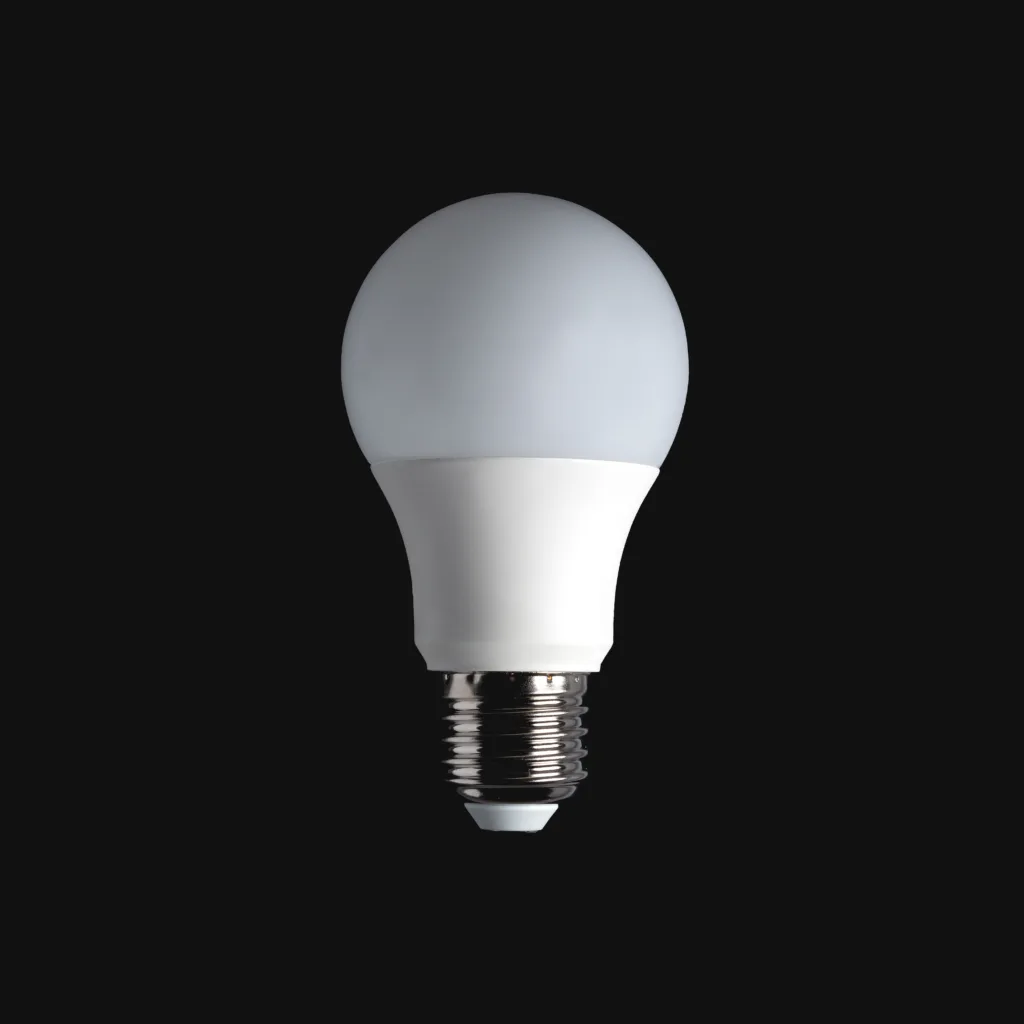Have you ever wondered how bright is 100 lumens? Let’s explore this topic in detai.
Firstly, it’s important to understand that lumens are a measure of the total amount of visible light emitted by a source. In other words, it measures the brightness of a light source. A standard flashlight that you migt find in a hardware store typically has a brightness of around 100 lumens.
So, how bright is 100 lumens in practical terms? Well, this amount of lumens is sufficient for most urban and suburban use cases. For example, it’s enough to help you navigate your way in a dimly lit parking lot or to illuminate a path while walking your dog at night.
If you’re looking at purchasing a headlamp, a 100 lumen headlamp that puts out about 1,400 lux one foot away, will put out about 350 lux two feet away. This means when looking about 16 feet away the light will be about 5 lux or the minimum illumination for hiking a groomed trail at night.
To put things into perspective, let’s compare 100 lumens to other common lighting options. A 40-watt incandescent light bulb typically emits around 600 lumens, while a 60-watt bulb emits around 900 lumens. A 100-watt bulb emits around 1500 lumens. So, a 100 lumen flashlight is not as bright as a standard light bulb, but it’s still bright enough for most everyday use cases.
It’s worth noting that the brightness, or lumen levels, of the lights in your home may vary widely. To replace a 100 watt incandescent bulb, you should look for a bulb that gives you about 1600 lumens. If you prefer dimmer light, look for fewer lumens, and if you prefer brighter light, look for more lumens.
100 lumens is a standard brightness level for most flashlights and is sufficient for most urban and suburban use cases. It’s not as bright as a standard light bulb, but it’s still bright enough to help you navigate your way in dimly lit areas.
Is 100 Lumens Bright Enough for a Flashlight?
When it comes to flashlight brightness, the amount of lumens is a significant factor to consider. Lumens refer to the total amount of light emitted by the flashlight, and the higher the number, the brighter the flashlight will be.
That being said, 100 lumens is considered a standard level of brightness for an average flashlight in today’s market. While it may not be the brightest option available, it is still bright enough for most everyday uses.
With a 100 lumens flashlight, you can expect to have a beam distance of around 50 meters. This amount of brightness is suitable for urban and suburban use, such as walking your dog at night, searching for items in your car, or navigating through a dark room.
Furthermore, a flashlight with 100 lumens will typically have a runtime of 5 to 10 hours uing 2 AA batteries. This amount of runtime is generally sufficient for most situations where you may need to use a flashlight.
It’s worth noting that the brightness level required for a flashlight depends on individual needs and preferences. If you require a brighter light for outdoor activities, such as camping or hiking, you may want to consider a flashlight with a higher lumen count.
100 lumens is a standard level of brightness for an average flashlight and is suitable for most everyday uses. However, if you require a brighter light for specific activities, you may want to consider a flashlight with a higher lumen count.


Source: bluerobotics.com
How Far Can 100 Lumens of Light Travel?
When it cmes to determining how far 100 lumens can be seen, it is important to take into account the surrounding environment and the specific application of the light. However, in general, a 100 lumen light source can be seen up to a distance of about 164 feet (50 meters) in a completely dark environment with no obstructions.
It is worth noting that the perceived brightness of a light source decreases as the distance from the source increases. This is due to the inverse square law, which states that the intensity of light decreases with the square of the distance from the source. Therefore, at a distance of 328 feet (100 meters), a 100 lumen light source would appear to be only 25% as bright as it would be at a distance of 164 feet (50 meters).
Additionally, the angle and focus of the beam can affect the perceived brightness and visibility of a light source. A narrow, focused beam may be visible at a greater distance than a wide, diffused beam.
While a 100 lumen light source can be seen up to a distance of 164 feet (50 meters) in ideal conditions, the actual visibility may vary depending on the environment and factors such as beam angle and focus.
Converting Lumens to Watts
When it comes to lighting, lumens and watts are two diffrent but equally important concepts. Lumens measure the amount of light emitted by a bulb or light source, while watts measure the amount of energy consumed to produce that light. In other words, the higher the lumens, the brighter the light, and the higher the watts, the more energy the light requires.
To answer the question, 100 lumens is equal to approximately 5-6 watts. However, it’s important to note that this conversion can vary depending on the type of light source you’re using. For example, a traditional incandescent bulb may require more watts to produce 100 lumens of light compared to a more energy-efficient LED bulb.
To give you a better idea of the different wattage requirements for various lumens, here’s a handy table:
– 600 lumens: 10 watts (LED), 40 watts (incandescent)
– 900 lumens: 15 watts (LED), 60 watts (incandescent)
– 1125 lumens: 18.75 watts (LED), 75 watts (incandescent)
– 1500 lumens: 25 watts (LED), 100 watts (incandescent)
It’s important to keep these conversions in mind when choosing the right light source for your needs. While higher wattage bulbs may produce brighter light, they also consume more energy and may not be as energy-efficient as lower wattage options. By understanding the relationship between lumens and watts, you can make more informed decisions about your lighting choices and find the right balance between brightness and energy efficiency.
How Many Lumens Are Needed for a Bright Light?
When it comes to determining the appropriate brightness of a light, the unit of measurement used is lumens. A lumen is defined as the amount of visible light emitted by a light source.
A good bright light typically has a lumen output of 1600 or more. This is equivalent to a 100 watt incandescent bulb. However, it’s important to note that the brightness of a light can also depend on other factors such as the color temperature and the size of the light source.
If you prefer a dimmer light, you can opt for a bulb with fewer lumens. On the other hand, if you want a brighter light, you can look for bulbs with higher lumen outputs. It’s also worth considering the size and layout of the room where the light will be used, as this can affect the overall brightness and effectiveness of the lighting.
To summarize, a good bright light typically has a lumen output of 1600 or more, but the ideal brightness can vary depending on individual preferences and the specific lighting nees of a room.
How Many Lumens Are Necessary?
When it comes to lighting a room, it’s important to consider how many lumens are needed to adequately illuminate the space. Lumens are a measurement of the amount of light emitted by a source, and the number of lumens needed depends on the size of the room and the intended use of the space.
To calculate the total lumens needed for a room, you first need to determine the square footage of the room. Once you have the square footage, you can then calculate the foot-candle requirement for the space. A foot-candle is a measurement of the amount of light that falls on a surface, and it is typically used to determine the amount of light needed for a specific task or activity.
The foot-candle requirement for a room depends on the intended use of the space. For example, a living room typically requires around 20 foot-candles, while a dining room may need as many as 40 foot-candles. Once you have determined the foot-candle requirement for the space, you can then multiply the square footage of the room by the foot-candle requirement to calculate the total lumens needed.
For example, a 100-square foot living room that needs 20 foot-candles would require 2,000 lumens. On the oher hand, a 100-square foot dining room that needs 40 foot-candles would require 4,000 lumens. It’s important to note that these are just general guidelines, and the specific lighting needs of a room may vary based on factors such as the color of the walls, the height of the ceiling, and the amount of natural light in the space.
In summary, to determine how many lumens you really need for a room, you need to calculate the square footage of the space and the foot-candle requirement based on the intended use of the room. From there, you can multiply the square footage by the foot-candle requirement to calculate the total lumens needed.

Source: benq.com
Is 100 Lumens Sufficient for Reading?
When it coes to reading, the amount of light you need may vary depending on a few factors. If you’re using a light source near your book, like a flashlight or clip-on reading light, 100 Lumens may be bright enough. However, if your lamp is not pointed directly at your page and is more than a foot away, it’s best to go with a bulb of at least 250 to 450 Lumens.
What exactly are Lumens, you might ask? Lumens are a unit of measurement for the brightness of a light source. The higher the number of Lumens, the brighter the light. The amount of Lumens you need to read comfortably depends on the ambient light in the room, the distance between the light source and the book, and your personal preference.
In general, a light source with 100 Lumens may be suitable for reading if it’s close to your book, and there’s not much ambient light in the room. However, if you’re reading in a dimly lit room or if your lamp is more than a foot away, you may need a brighter light source. A bulb with 250 to 450 Lumens should provide enough brightness for comfortable reading in most situations.
To sum it up, whether 100 Lumens is enough to read depends on the lighting conditions in your room and the distance between your light source and the book. If you’re unsure, it’s always a good idea to test different light sources and brightness levels until you find the right one for you.
The Sun’s Luminosity in Lumens
The sun is an incredibly bright celestial object and is the primary source of light and heat for our planet. The amount of light produced by the sun is measured in lumens, which is a unit of measurement used to describe the total amount of visible light emitted by a source.
According to scientific estimates, the sun produces an astounding 35.73 octillion lumens. To put this into perspective, one octillion is equivalent to 1 fllowed by 27 zeros. This means that the sun produces an unimaginably large amount of light that is difficult for our human brains to comprehend.
It is worth noting that the amount of lumens produced by the sun can vary depending on a number of factors, including the distance between the Earth and the sun, as well as the presence of any atmospheric conditions that might affect the way we perceive the sun’s light.
Despite this variability, the sun remains one of the brightest sources of light in the solar system and continues to be a source of fascination for astronomers and scientists all over the world.
The Brightness of Phone Flashlights
A phone flashlight typically emits around 40-50 lumens of light. However, it shold be noted that the beam is diffused, which means that it is most effective in illuminating small areas that are close by. While a phone flashlight may be adequate for some basic tasks, it may not be suitable for more demanding outdoor activities that require brighter illumination over longer distances. For such activities, a dedicated flashlight is recommended. These flashlights typically have a higher brightness level, better distance coverage, and a longer runtime. Ultimately, the choice of flashlight will depend on the specific needs of the user and the requirements of the task at hand.
Is 120 Lumens Sufficiently Bright?
When it comes to landscape lighting, the brightness requirement can vary depending on the type of light and its intended purpose. For spotlights, 120 lumens is typically considered bright enough. This amount of brightness can effectively highlight a specific feature in your yard or garden, such as a tree or statue. However, it may not be enough to fully illuminate a larger area.
If you’re looking to install path lights along a walkway or garden path, a brightness level of 100 to 200 lumens is recommended. This will provide ample illumination for safe navigation, while also creating a pleasant ambiance.
It’s important to keep in mind that brightness is just one factor to consider when choosing landscape lighting. The color temperature of the bulbs, the angle of the beam, and the placement of the lights all play a role in creating the desired effect. Ultimately, the right level of brightness will depend on your specific neds and preferences.

Source: homedepot.com
The Brightness of a 100-Watt LED
LEDs have become a popular lighting option in recent years, largely due to their energy efficiency and long lifespan. One common question about LEDs is whether a 100-watt LED bulb is bright enough to replace a 100-watt incandescent bulb.
The short answer is yes, a 100-watt LED bulb is just as bright as a 100-watt incandescent bulb. However, LED technology has come a long way in recent years and there are now LED bulbs available that are much brighter than a standard 100-watt incandescent bulb.
When shopping for LED bulbs, it’s important to pay attention to the lumens rating rather than the wattage. Lumens measure the brightness of a bulb, while watts measure the amount of energy it uses. A 100-watt incandescent bulb typically produces around 1600 lumens, so look for an LED bulb with a lumens rating of at least 1600 to ensure it is just as bright.
It’s also worth noting that LED bulbs have a different color temperature than incandescent bulbs, which can affect how bright a room appears. Incandescent bulbs have a warm, yellowish color temperature, while LEDs are available in a range of color temperatures from warm to cool. A cool white LED bulb may appear brighter than a warm white LED bulb with the same lumens rating, even though they are both producing the same amount of light.
A 100-watt LED bulb is just as bright as a 100-watt incandescent bulb, but there are now brighter LED bulbs available. When shopping for LED bulbs, pay attention to the lumens rating and conider the color temperature to ensure you are getting the right level of brightness for your needs.
How Bright Is a 100-Watt Light?
The brightness level of a light bulb cannot be determined solely by its wattage. The wattage of a light bulb actally tells you how much energy it uses, not how bright it is. Therefore, a 100-watt light bulb is not necessarily brighter than a 40-watt light bulb.
In the past, wattage was a reliable measure of a light bulb’s brightness. However, with the development of newer, more energy-efficient light bulbs, this is no longer the case. For example, LED bulbs use significantly less energy than traditional incandescent bulbs, but can produce the same amount of brightness or even more.
To determine the brightness level of a light bulb, you should look at its lumens rating. Lumens measure the amount of light a bulb produces, and the higher the lumens rating, the brighter the bulb. For instance, a 1600 lumens LED bulb can produce the same amount of brightness as a 100-watt incandescent bulb, while using only 16 watts of energy.
While a 100-watt light bulb may have been considered bright in the past, it is not a reliable indicator of brightness in modern lighting. To accurately determine the brightness level of a light bulb, you should look at its lumens rating.
Is 50 Lumens Bright Enough?
When it comes to garden lights used as accent lighting, 50 lumens can be considered bright enough to add safety, dimension, color, and interest in your yard. This level of brightness is perfect for illuminating small garden paths, flower beds, or other outdoor features that you want to highlight.
However, it’s important to note that the brightness of 50 lumens may not be sufficient for larger outdoor areas or commercial properties. For such locations, a higher level of brightness, around 80 lumens, is generally recommended.
To give you a better idea of what 50 lumens can achieve, it’s equivalent to the brightness of a typical night light or a candle. It’s also important to consider the color temperature of the light as it can affect the perceived brightness. Light with a warmer color temperature, such as yellow or orange, can appear less bright than light with a cooler color temperature, such as blue or white.
50 lumens can be considered bright enough for accent lighting in your garden, but it’s important to assess the size and purpose of the outdoor space before selecting the approriate level of brightness.
What Is the Ideal Lumen Output for an LED Bulb?
When it comes to LED bulbs, the amount of lumens required depends on the intended use and personal preference. However, a good LED bulb typically produces around 800-1100 lumens. This range is suitable for general lighting in most households, including living rooms, bedrooms, and kitchens.
It’s worth noting that the wattage of an LED bulb doesn’t necessarily correlate with its brightness. Instead, the number of lumens is a better indicator of the bulb’s brightness. For example, a 60-watt incandescent bulb produces around 800 lumens, whereas an LED bulb with only 9 watts can produce the same amount of brightness.
To choose the right LED bulb for your needs, consider the brightness you require, the color temperature (measured in Kelvin), and the bulb’s compatibility with your fixtures. LED bulbs with a color temperature of 2700K-3000K produce warm white light, while those with a temperature of 3500K-4100K are cool white.
A good LED bulb shoud produce around 800-1100 lumens, have a suitable color temperature, and be compatible with your fixtures.

How Many Lumens Are Necessary for Nighttime Illumination?
When it comes to selecting a flashlight for night use, the required number of lumens is an important factor to consider. Lumens refer to the total quantity of light emitted by a flashlight. The appropriate number of lumens required at night will depend on the activity you are undertaking, the level of darkness, and the terrain.
For a person walking normally at night on flat terrain, flashlights with 25-45 lumens are sufficient. If you are walking on a flat road, a flashlight with 50 lumens will suffice. However, if you intend to walk faster or the terrain is rugged, a flashlight with a higher number of lumens wuld be necessary to ensure sufficient visibility.
If you are planning to engage in activities such as hiking or camping at night, you may require a flashlight with a higher number of lumens. A flashlight with 100-150 lumens would be adequate for such outdoor activities.
It is worth noting that the higher the number of lumens, the brighter the flashlight will be, and the faster you can walk at night. On the other hand, a lower number of lumens will result in a dimmer light and slower walking pace.
The number of lumens required at night will depend on the activity you are undertaking, the level of darkness, and the terrain. For normal walking on flat terrain, flashlights with 25-45 lumens are sufficient, while a higher number of lumens may be required for faster walking or rugged terrain.
How Many Lumens Are Needed To Light a Room?
When it comes to lighting a room, the number of lumens required depends on the size and purpose of the room. Generally, a sitting room or bedroom will require around 10-20 lumens per square foot. This level of lighting is suitable for relaxing in a comfortable environment. In contrast, a bathroom or kitchen will need a stronger level of lighting, at around 70-80 lumens per square foot. This level of lighting is required to perform tasks such as shaving, applying makeup or cooking.
To determine the number of lumens required for a specific room, you need to calculate the total square footage of the room and multiply it by the recommended lumens per square foot. For example, if your living room is 200 square feet, you would need between 2,000 and 4,000 lumens of lighting (200 x 10-20 lumens per square foot).
It’s important to note that the type of light bulb you choose will also impact the number of lumens required. LED light bulbs typically require fewer lumens to produce the same amount of light as traditional incandescent bulbs. Additionally, the color temperature of the light bulb can also affect the amount of light perceived. Warmer colors (such as yellow or orange) tend to produce a softer, more relaxing light, whie cooler colors (such as blue or white) tend to produce a brighter, more energizing light.
The number of lumens required to light a room depends on its size and purpose. Use the recommended lumens per square foot as a guide and consider the type and color temperature of the light bulb to achieve the desired lighting effect.
Conclusion
100 lumens is a standard measure of brightness for flashlights and headlamps. It is considered adequate for urban and suburban use, providing enough illumination for walking on groomed trails at night. A 100 lumen headlamp can produce about 1,400 lux one foot away, making it ideal for use in various outdoor activities.
To put it into perspective, a 100 lumen light bulb can replace a 40W incandescent light bulb, producing the same amount of brightness while consuming less energy. A 100 lumen flashlight can prvide a runtime of 5-10 hours using 2 AA batteries.
100 lumens is a versatile and practical measure of brightness that can be used in various settings, from camping and hiking to household activities. Its efficiency and convenience make it a popular choice for those who value functionality and ease of use.
